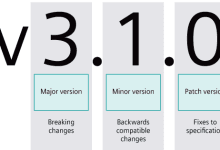
We’re seeing a big change in how businesses talk to their customers. Now, they really want to get the emotional side of what customers say.
Our Sentiment Analyzer helps find emotions in different ways people communicate. This includes text, emails, chats, and calls. It uses smart NLP to find the emotional tone in what customers say.
This lets businesses make better choices and serve their customers better. In this article, we’ll dive into emotion detection and how it’s used.
What is Sentiment Analysis?
Companies worldwide use a tool to understand human feelings in text, emails, chats, and calls. Sentiment analysis is a part of natural language processing. It helps businesses know what their customers like and need.
Definition and Importance
Sentiment analysis is about figuring out the emotional tone in digital text. It’s positive, negative, or neutral. This is key for businesses to grasp their customers’ feelings and what they prefer. It guides them to better serve their customers and keep them loyal.
This tool is vital because it lets companies get to know their customers better. By looking at feedback, they can spot what needs work, see if their marketing works, and improve the customer experience.
A Brief History
The early 2000s saw the start of sentiment analysis. Researchers used natural language processing to find emotions in text. Since then, it’s grown a lot, thanks to better machine learning and more data.
Now, sentiment analysis is used in many fields, like customer service, marketing, finance, and healthcare. It helps businesses understand their customers better, leading to better operations and relationships.
Applications in Various Industries
Sentiment analysis is used in many ways across different industries. Here are some main areas:
- Customer Service: It helps improve service by analyzing feedback and solving problems fast.
- Marketing: It checks how well marketing campaigns work and what customers think of brands.
- Finance: It looks at financial news and social media to guess stock prices and spot risks.
- Healthcare: It helps improve healthcare by understanding patient feedback and outcomes.
These examples show how sentiment analysis is useful in various sectors. It helps businesses make better decisions and improve how they interact with customers.
How Sentiment Analyzers Work
Sentiment analyzers use natural language processing and advanced algorithms to detect emotions. They aim to understand human language, which is complex and nuanced.
Natural language processing (NLP) is a part of artificial intelligence. It helps computers understand and use human language. This is key for sentiment analysis.
Natural Language Processing Explained
NLP uses machine learning and deep learning to analyze human language. It involves steps like tokenizing text, identifying word types, and recognizing entities. NLP helps computers find insights in unstructured text data, which is vital for businesses to gauge customer feelings.
The process starts with breaking down text into words or tokens. Then, it identifies the grammatical role of each word. Next, it finds named entities like companies, places, and people. Lastly, it analyzes the emotional tone of the text.
Algorithms Behind Emotion Detection
The algorithms in sentiment analysis are crucial. Machine learning algorithms are trained on large datasets to spot language patterns that show sentiment. Deep learning, like CNNs and RNNs, excels in catching the subtleties of human emotions in text.
These algorithms look at words, their context, and sentence structure. They can pick up on small signs that show the text’s sentiment, whether it’s positive, negative, or neutral.
We employ these sophisticated algorithms for precise sentiment analysis. This helps businesses understand their customers and make smart choices.
Key Features of a Sentiment Analyzer
A sentiment analyzer must be able to understand emotions, score feelings correctly, and work well with different ways of talking. These are key for companies to know what their customers feel and think.
Emotional Insight Generation
Understanding the feelings behind what customers say is very important. A sentiment analyzer can look at text, emails, chats, and calls. It can spot feelings like happiness, sadness, anger, or frustration. This helps companies get a better sense of what their customers are feeling.
Sentiment Scoring
Sentiment scoring is key because it shows how customers feel. It helps companies see how positive, negative, or neutral feedback is. This makes it easier for companies to know how to make their customers happier.
| Sentiment Score | Interpretation | Business Action |
|---|---|---|
| Positive | Customer is satisfied | Enhance positive experience |
| Negative | Customer is dissatisfied | Address customer concerns |
| Neutral | Customer is indifferent | Engage to improve sentiment |
Integration with Communication Platforms
Being able to work well with different ways of talking is crucial. This lets companies look at feedback from emails, chats, and calls. It gives a full picture of what customers are feeling.
- Email analysis for customer support tickets
- Chat analysis for real-time customer feedback
- Call analysis for voice emotion detection
With these features, a sentiment analysis tool can help companies make better choices. It can improve how they talk to customers and help the business grow.
Benefits of Using Sentiment Analysis
Companies can understand their customers’ feelings better with sentiment analysis. This is key in today’s market, where happy customers make a big difference.
Improved Customer Interactions
Sentiment analysis helps businesses check what customers say in emails, chats, and calls. It lets them improve their customer service and answer concerns better. This makes customers happier overall.
For example, a company can spot what customers like and dislike. This helps them tailor their services to what customers want. This can make customers more loyal.
Enhanced Decision-Making
Sentiment analysis gives businesses useful insights for making decisions. By knowing what customers feel, companies can gain a competitive edge. This helps them make choices that customers will like.
| Decision-Making Area | Traditional Approach | Sentiment Analysis Approach |
|---|---|---|
| Product Development | Relying on sales data and market research | Analyzing customer feedback and sentiment to inform product features |
| Marketing Strategy | Using demographic data and market trends | Understanding customer emotions and preferences to tailor marketing campaigns |
Real-Time Feedback
Sentiment analysis is great for getting feedback right away. Businesses can monitor customer sentiment during big events. This lets them change their plans if needed.
In conclusion, sentiment analysis is a big help for businesses. It makes customer interactions better, helps with making decisions, and gives feedback in real-time. All these things can make a business successful and keep it ahead of the competition.
Popular Sentiment Analyzer Tools
The world of sentiment analysis has many tools, each with its own strengths. Businesses want to know what customers feel and think. So, they look for advanced tools to analyze these emotions and preferences. We’ll look at three top tools: Google Cloud Natural Language, IBM Watson Tone Analyzer, and Microsoft Azure Text Analytics.
Google Cloud Natural Language
Google Cloud Natural Language is a strong tool for sentiment analysis. It uses Natural Language Processing (NLP) to understand text and its sentiment. It’s great for businesses wanting to know what customers say and feel.
This tool can handle text in many languages, which is good for companies worldwide. It also gives detailed insights into text sentiment, like how strong the feeling is.
IBM Watson Tone Analyzer
IBM Watson Tone Analyzer is a key player in sentiment analysis. It uses AI and NLP to find the tone and sentiment in text. It’s perfect for businesses that need to grasp the subtleties of customer communication.
It can look at text from different places, like emails and social media. It shows the emotional tone of the text, helping businesses understand what customers want and like.
Microsoft Azure Text Analytics
Microsoft Azure Text Analytics is a cloud API for text analysis. It does sentiment analysis, finds key phrases, and detects languages. It’s made for quickly and efficiently handling lots of text data.
It’s great because it works well with other Azure services. It also does real-time sentiment analysis, so businesses can quickly respond to customer feedback.
Looking at these popular tools helps businesses choose the right one. Each tool has special features and strengths. Knowing what each tool can do is key for good sentiment analysis.
Use Cases for Email Analysis
Businesses can gain valuable insights from their emails with sentiment analysis tools. This method helps companies understand what customers are saying. It’s key for improving customer service, marketing, and team engagement.
Email analysis is useful in many areas of business. Let’s look at three main ways it helps.
Customer Support Optimization
Customer support teams benefit a lot from email analysis. They can quickly see which emails need urgent attention. This ensures customer concerns are dealt with fast.
It also helps spot common problems customers face. This lets businesses fix these issues before they become bigger problems. It makes customers happier and reduces support requests.
Marketing Campaign Feedback
Marketing teams can check how well their campaigns are doing with email analysis. They see how people feel about their messages. This tells them what’s working and what needs work.
Employee Engagement Surveys
Employee surveys sent via email also benefit from sentiment analysis. It shows how happy and engaged employees are. This helps find out what’s working and what’s not.
In short, using sentiment analysis tools in email analysis is very helpful. It improves customer service, marketing, and team morale. As email becomes more important, these insights will be even more valuable.
Utilizing Sentiment Analysis in Chat
Sentiment analysis in chat is changing how companies talk to customers. It finds emotions in real-time. This is key in today’s world, where chat apps are main for customer service.
Now, businesses can really get how customers feel through chat. They use sentiment analysis to understand emotions in messages. This lets them give more caring and personal answers.
Chatbots and AI Integration
Chatbots and AI with sentiment analysis are making customer service better. Chatbots with this tech can see how customers feel and change their answers. This makes customers happier and cuts down on the need for humans in simple questions.
For example, if a customer seems upset, the chatbot can offer a kinder response or pass it to a human. This makes sure customers get the right help, making their experience better.
Enhancing User Experience
Sentiment analysis in chat apps makes user experience better. It gives quick and fitting answers. By knowing how customers feel, companies can spot what needs work and improve their services.
- Personalized responses based on customer emotions
- Proactive issue resolution
- Improved customer engagement through empathetic interactions
Crisis Management
In crises, sentiment analysis in chat is very useful. It spots negative feelings early. This lets companies act fast to fix problems before they get worse.
For instance, during a product recall or service problem, it helps find and answer customer worries right away. This helps keep the company’s good name.
Using sentiment analysis in chat makes customer service more personal and effective. This leads to success for businesses.
The Role of Sentiment Analysis in Calls
Businesses are using sentiment analysis to understand the emotions in voice calls. This helps them offer more personalized and empathetic service. It’s key to improving customer experience.
Voice Emotion Detection Technology
Voice emotion detection technology is advanced. It uses algorithms to find out how a caller feels. It can spot small changes in tone and pace.
Key Features of Voice Emotion Detection Technology:
- Emotion recognition through vocal cues
- Real-time analysis of customer calls
- Integration with CRM systems for enhanced customer insights
This technology helps businesses understand their customers better. It leads to better issue resolution and higher satisfaction.
Predictive Analysis for Customer Retention
Predictive analysis goes beyond sentiment analysis. It uses past data to guess future behavior. For calls, it can spot customers likely to leave, helping keep them.
| Predictive Analysis Benefits | Description | Impact on Customer Retention |
|---|---|---|
| Early Identification of At-Risk Customers | Analyzing call sentiment to predict potential churn | Proactive retention strategies |
| Personalized Customer Engagement | Tailoring responses based on predicted customer needs | Enhanced customer loyalty |
| Data-Driven Decision Making | Using predictive insights to inform business strategies | Improved customer satisfaction and retention |
Using predictive analysis in customer service can boost retention. It also makes the customer experience better.
Challenges and Limitations
Sentiment analysis has its hurdles, affecting its success. It’s key to face these challenges head-on. This is true for text, emails, chats, and calls.
It uses NLP (Natural Language Processing) to find emotions. But, human language’s complexity is a big challenge.
Ambiguity in Emotions
One big issue is the unclear emotions in language. Sarcasm, irony, and figurative language are hard to get right. For example, “What a beautiful day!” can mean the opposite of what it says.
To tackle this, new NLP techniques are being created. They aim to grasp language’s subtleties better. This includes training on a wide range of examples.
Data Privacy Concerns
Data privacy is another big challenge. Sentiment analysis needs access to personal info. Keeping this data safe is crucial.
To solve this, companies must use strong data protection. This includes encryption and secure storage. Following laws like GDPR is also vital.
Need for Continuous Learning
The way we communicate is always changing. New slang and ways to talk come up all the time. So, our models need to keep learning.
This means we need to keep investing in analysis and training. By keeping up with these changes, our sentiment analysis stays sharp.
In summary, sentiment analysis is powerful but faces many challenges. By tackling these issues, we can make the most of it in our work.
The Future of Emotion Detection
As we keep improving sentiment analysis, the future of emotion detection is bright. With AI getting better, we’ll see tools that can spot emotions more accurately. These tools will work on different platforms too.
Advancements in AI Technology
AI is changing how we analyze feelings, making emotion detection smarter. It uses machine learning to understand what customers really feel and want. This helps businesses know their customers better.
Predictive Insights and Cross-Platform Integration
When sentiment analysis tools work together on different platforms, businesses get a complete picture of customer feelings. This lets them make better choices. Predictive emotional insights help them guess what customers might need next, boosting growth and happiness.
By using these new emotion detection tools, companies can lead the way. They’ll find new ways to grow and connect with customers. This makes their customer service better, thanks to advanced sentiment analysis and emotion detection.







